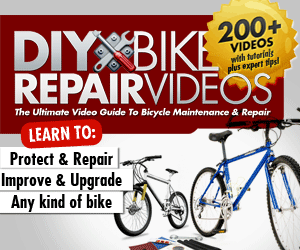Quick Tune Up For Spring Bicycle Riding
For those of us who put our bikes away for the winter, the time has come to dust them off and get ready to ride. When bringing a bike out of storage, a mini tune-up is necessary. Pay special attention to the following four areas: chain, derailleur components, brakes, and wheels.
Chain
If you have been using an oil-based lubricant, consider switching to a wax-based product. The only advantage to an oil-based lubricant is that it needs to be applied less frequently, but in every other way, wax-based is superior. For instance, oil collects trail dust and other things abrasive to the chain, whereas wax sheds abrasives. A recommended wax-based lube is White Lightning.
If you’ve been using oil-based chain lube, whether you want to switch to wax or not, you should remove the chain and clean it with a solvent to degrease it before adding fresh lubricant. Depending on your typical riding conditions, using a solvent to degrease the chain needs to be done once a year at a minimum.
Derailleur Components
Lubricate the pivot points using a good petroleum-based lube. I use Tri-Flow. Next, lubricate and adjust the derailleur cables, which might have stretched over the winter. Adjust so that shifting is crisp.
Brakes
Again, lubricate the cables. Use either petroleum- or wax-based lube depending on how dusty the expected typical riding conditions will be. Adjust the cables, which might also have stretched over the winter.
Check the pads: is there plenty of rubber; do the pads hit the rims evenly? If using fluid-actuated disc brakes, check the brake fluid level in the reservoir.
Wheels
Spin the wheel slowly checking for true. The wheel should not wobble at all. If it wobbles a little bit and you have the tools and skill, you can make minor adjustments using a spoke wrench. But if there is substantial wobbling, take the wheel to a shop and have a professional true the wheel.
Check tire pressure, which is bound to be low after a winter of storage. Inflate to the manufacturers recommendations that are stamped on the tire.
Now give the bike a once-over. Is the seat adjustment still a good fit? Is there excess play or tightness in the bearings of the wheels, crank, pedals, and headset? Also, for full-suspension bikes, check the suspension joints.
From this once-over, you will be able to determine whether it is time for a major tune-up. This could range from a few adjustments to cleaning and/or replacement of some parts. Opinions differ on how often a major tune-up is needed. It depends on how much you ride, and how much maintenance you perform yourself.
Whether you do the major tune-up yourself or take the bike to a reputable bicycle shop, every now and then the following maintenance is necessary for optimal performance and safety: repacking bearings and adjusting wheel axles, headset, crankset and pedals; replacing cables; truing the wheels; making overall adjustments, such as to the derailleur and brakes.




